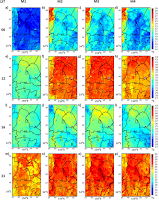UNSW Sydney had 43 researchers in the top 10,000 last year in the world’s most comprehensive standardised citation database.
The latest release from the Meta-Research Innovation Center at Stanford places 43 UNSW researchers in the top 10,000 scientists globally, based on citations received in 2019, the most from any Australian university. For career-long citations (from 1996), UNSW was second to the University of Melbourne.
This science-wide author database, which is publicly available and published in PLoS Biology, was developed by Professor John Ioannidis from Stanford University. It systematically ranks 160,000 of the most influential scientists, as measured by citation indicators which exclude self-citations and adjust for author position and number.












